The Storm Skiing Podcast is sponsored by Spot and Mountain Gazette - Listen to the podcast for discount codes on subscriptions and merch.
Who
Nadia Guerriero, Vice President and Chief Operating Officer of Beaver Creek, Colorado
Recorded on
March 25, 2022
About Beaver Creek
Click here for a mountain stats overview
Owned by: Vail Resorts
Base elevation: 7,400 feet at Arrowhead Village; 8,100 feet at Beaver Creek Village
Summit elevation: 11,440 feet
Vertical drop: 3,340 feet (continuous)
Skiable acres: 2,082
Average annual snowfall: 325 inches
Trail count: 150 (39% advanced, 42% intermediate, 19% beginner)
Lift count: 24 (12 high-speed quads, 1 chondola, 2 gondolas, 1 triple, 1 double, 7 conveyors - view Lift Blog’s inventory of Beaver Creek’s lift fleet)
Uphill capacity: 48,264 skiers per hour

Why I interviewed her
America may or may not have suspected, when Beaver Creek flipped the power on in 1980 with three double chairs and three triples, that we were nearing the end of big-time ski resort construction in the United States. In the previous decade, Keystone (1970), Snowbird (1971), Copper Mountain (1972), Kirkwood (1972), Northstar (1972), Powder Mountain (1972), Telluride (1972), and Big Sky (1973) had all come online. Breckenridge (1961), Crested Butte (1962), Vail (1962), Park City (1963), Schweitzer (1963), Steamboat (1963), Crystal Mountain Washington (1964), Mt. Rose (1964), Purgatory (1965), Diamond Peak (1966), Jackson Hole (1966), Mission Ridge (1966), Snowmass (1967), Sierra-at-Tahoe (1968), and Grand Targhee (1969) had materialized out of the wilderness the decade before. This was a country that thought big and acted big, that crafted the tangible out of the improbable: a high-end ski resort, buffed smooth as an interstate and hemmed in by the faux villages of aspirational America, rising 3,000 feet out of the Colorado wilderness. The resort would be Vail’s answer to Aspen, high-end and straight down, without the drive to the end of the world.
But after Deer Valley cranked to life the following year, big-mountain ski area development mostly broke down in the United States. The mammoth Yellowstone Club – all private, exclusively for individuals who consider automobiles to be single-use disposables – didn’t open until 1997. Tamarack, Idaho, was the next entrant, in 2004. The private Wasatch Peaks should open soon, and Mayflower may follow. But for the most part, this is a nation that, for better or worse, has decided to make do with the ski resorts it has.
So what? Well, I lay this history out to make a simple point: Beaver Creek is about the best illustration we have of how and where we would build a ski resort if we still built ski resorts, with all our modern technology and understanding. The fall lines are incredible. The lift network sprawls and hums. The little walkable villages excise vehicles at exactly the right points. The place is just magnificent.
The aversion to large-scale mountain construction did not, fortunately, temper Beaver Creek’s ambition. That simple half-dozen lifts multiplied to the west until the network overran and absorbed the formerly independent Arrowhead ski area. In 1991, Beaver Creek ran a high-speed quad up Grouse Mountain, one of the best pure black-diamond pods in Colorado. This year, the ski area added McCoy Park, a terrific high-altitude beginner pod, which complements the green-circle paradise off the Red Buffalo Express, already some of the most expansive top-of-the-world beginner terrain in America.
Not that Beaver Creek got everything it wanted. A long-imagined 3.8-mile gondola connection to Vail, with a waystation at the long-abandoned Meadow Mountain ski area in Minturn, has been stalled for years. A lift up from Eagle-Vail would also be nice (and would eliminate a lot of traffic). But this isn’t the Alps, and the notion of lifts-as-transit is a tough sell to U.S. Americans, even in a valley already served by 55 of them (Vail Mountain has 31 lifts on top of Beaver Creek’s 24). They’d rather just drive around in the snow.
Whatever. It’s a pretty fine complex just the way it is. And it’s one with a big, bold, ever-changing present. Beaver Creek is, along with Whistler and Vail Mountain, one of Vail Resorts’ three flagships, a standard-setter and an aspirational end-point for all those Epic Pass buyers around Milwaukee and Minneapolis and Detroit and Cleveland. This one has been on my list since the day I launched The Storm, and I was happy to finally lock it down.
What we talked about
Why Beaver Creek is closing a bit later than usual this season; Guerriero’s early career as an agent for snowsports athletes, including Picabo Street and Johnny Moseley; night skiing at Eldora; working at pre-Vail Northstar; reactions to Vail buying Northstar; taking the lead at Beaver Creek; the differences between running a ski resort in Colorado versus Tahoe; what it means to get 600-plus inches of snow in a season; what elevates Beaver Creek to alpha status along with Vail Mountain and Whistler among Vail’s 40 resorts; going deep on the evolution and opening of McCoy Park, Beaver Creek’s top-of-the-mountain gladed beginner oasis; why the mountain converted McCoy to downhill terrain when it already had the excellent Red Buffalo pod on the summit of Beaver Creek Mountain; once again, I go on and on about green-circle glades; thoughts on the mountain’s lift fleet and where we could see upgrades next; why Beaver Creek doesn’t tend to see monster liftlines and the weird un-business of the ski area in general; the status of the long-discussed Vail Mountain-to-Beaver Creek gondola; thoughts on the rolling disaster that is Colorado’s Interstate 70; how Arrowhead, once an independent ski area, became part of Beaver Creek; the surprising sprawl and variety of Beaver Creek; potential future terrain expansions; the mountain’s high-end and rapidly evolving on-mountain food scene; cookies!; watching the evolution of the Epic Pass from the inside; whether Vail would ever build another ski area from scratch; Vail’s deliberate efforts to create leadership opportunities for women within its network; the mountain-town housing crisis; thoughts on Vail’s massive employee and housing investment; and Guerriero’s efforts to address the mountain-town mental health crisis.
Why I thought that now was a good time for this interview
Two words: McCoy Park. I recall skiing past this oddly wide-open and empty bowl, perched atop the mountain like some snowy pit-mine, years ago and wondering what was going on in there. The trailmap explained. For a long time, it was a Nordic and snowshoeing center. But this year, Beaver Creek finally finished a long-planned project to drop a new beginner center into the bowl. Two lifts and a clutch of blues and greens, some ungroomed, a contained adventure center for the graduated-from-the-carpet set that’s craving top-of-the-mountain adventure without the whooshing crowds or oops-I-just-skied-into-a-mogul-field regrets. Reviews have been solid.
There’s one more thing: Vail has quietly built a very deep roster of women mountain leaders. Four of the company’s five Colorado resorts, and eight of its 40*, are led by women. Women hold approximately 45 percent of Vail’s corporate leadership roles, and half of its 10 board of directors members are women. Also, according to a Vail spokeswoman, CEO Kirsten Lynch is the only female CEO among travel and leisure companies listed on the 2021 Fortune 100 list.
These gender-diversity efforts are, Vail Resorts’ Director of Corporate Communications Jamie Alvarez told me, “intentional and explicit. The ski industry has traditionally been male-dominated, particularly in senior leadership roles. As a company, Vail Resorts has prioritized creating an environment that encourages and enables growth opportunities for women at all levels of the company. This isn’t just in corporate, but also throughout our operations. We are proud of our industry-leading accomplishments and are committed to continuing to accelerate women at our company and in our industry.”
They should be.
*The eight current women heads of Vail Resorts are: Jody Churich at Breckenridge, Nadia Guerriero at Beaver Creek, Beth Howard at Vail, Tara Schoedinger at Crested Butte, Dierdra Walsh at Northstar, Belinda Trembath at Perisher, Sue Donnelly at Crotched, and Robin Kisiel at Whitetail. Vail recently promoted Mount Snow GM Tracy Bartels to VP of mountain planning, projects, and maintenance, overseeing maintenance and mountain-planning efforts across the portfolio.
Questions I wish I’d asked
I’ve always found it interesting that Alterra chose to leave Deer Valley off the unlimited tier of the Ikon Pass, while Vail granted unlimited Beaver Creek access on its comparatively cheap Epic Pass (Deer Valley’s season pass is $2,675). Both ski areas have similar philosophies around grooming, on-mountain food, and delivering a high-end experience. My guess is that this model works at Beaver Creek because it’s just a little bit harder to get to, while you can fall off your patio in Salt Lake City and end up at the top of Deer Valley’s Empire Express. Since Alterra just limited Deer Valley access even more, yanking it off the Ikon Base Pass, I’m guessing they’re fairly committed to that model, but it’s still an interesting contrast that I’d like to explore more at some point.
What I got wrong
Nadia and I discussed one of the more tedious meta-critiques of Vail, which is that the company makes all its resorts the same. I don’t agree with this narrative, but the example I gave on the podcast was, to be honest, pretty lame, as I couched my counterpoint in a discussion of how Beaver Creek and Northstar differ operations-wise. Which, of course. No one is comparing Kirkwood to Mad River, Ohio from a snowfall and terrain point of view. What I should have done instead is to ask Guerriero what makes each resort culturally distinct. That’s on me.
I also made the assertion that skiers could drop into McCoy Park from the top of the Bachelor Gulch lift, which is untrue. The three lifts with McCoy access (aside from the two lifts within the bowl intself) are Strawberry Express, Larkspur Express, and Upper Beaver Creek Express. I made a bad assumption based on the trailmap.
Why you should ski Beaver Creek
Living in New York, I find myself in a lot of casual conversation with skiers pointed west for a week at Vail. I don’t know why (actually I do know why), but New Yorkers are drawn to the place like cows to grass. Like hipsters to $9 coffee drinks. Like U.S. Americans to 18-wheel-drive pickups. Like… well, they really like Vail, OK? And every time someone tells me about their long-planned trip to Vail, I ask them how many days they plan on spending at Beaver Creek, and (just about) every time, their answer is the same:
Zero.
This, to me, is flabbergasting. A Storm reader, Chris Stebbins, articulated this phenomenon in an email to me recently:
“Beaver Creek is the single biggest mystery in skidom in my humble opinion. On Epic. On I-70. Just 12 minutes past Vail. 15 high-speed lifts strung across six pods, suiting every ability. A huge bed base, with a mountain ‘village.’ And I’m making 15-minute laps on Centennial. On a perfect blue-bird day. After 16 inches of snow. On a Saturday. During Presidents’ Week.”
I don’t get it either, Chris. But there it is. I’ve been having similar experiences at Beaver Creek for almost 20 years. Enormous powder days, lapping Birds of Prey and Grouse Mountain, no liftlines all day. Maybe here and there on Centennial. Once or twice on Larkspur or Rose Bowl. The entirety of the Arrowhead and Bachelor Gulch side deserted, always, like some leftover idyll intact and functional after an apocalyptic incineration of mankind. Once, on Redtail, or maybe it was Harrier, I crested the drop-off at mid-day to catch the growling hulks of half a dozen Snowcats drifting out of my siteline. Ahead of me a corduroy carpet, woven and royal, the union of all that is best in nature and best in technology. And no one to fight for it. I stood there perched over the Rockies just staring. Like I’m in a museum and contemplating something improbably manmade and ancient. Glorious. And 18 years later I still think about those turns, the large arcing sort born of absolute confidence in the moment, those Rossi hourglass twin-tips bought at an Ann Arbor ski shop and buried, for an ecstatic instant, in the test-lab best-case-scenario of their design.
Look, I love Vail Mountain as much as anyone. It’s titanic and frenetic and pitch-perfect for hero turns on one of the most unintimidating big mountains in North America. I could spend the rest of my life skiing there and only there and be like, “OK well if it has to be one place I’m just relieved it’s not Ski Ward.” But the dismissive attitude toward 2,082-acre Beaver Creek, with its 3,340-foot vertical drop and zippidy-doo lift fleet and endless sprawling trail network, is amazing. The terrain, especially on Grouse, is steep and fall-line beautiful. My last trip to Beaver Creek – a midwinter pow-day Sunday where I never so much as shared a chair with another skier – was a dozen runs off Grouse, eight of those in the tangled wilds of Royal Elk Glades.
All of which is a long way of suggesting that you work at least one Beaver Creek day into your next Vail run. It may be right down the road from Vail and an Epic Pass headliner, but Beaver Creek feels like it’s on another planet, or at least lodged within another decade.
Oh yeah, and the cookies. Just trust me on this one. Go there.
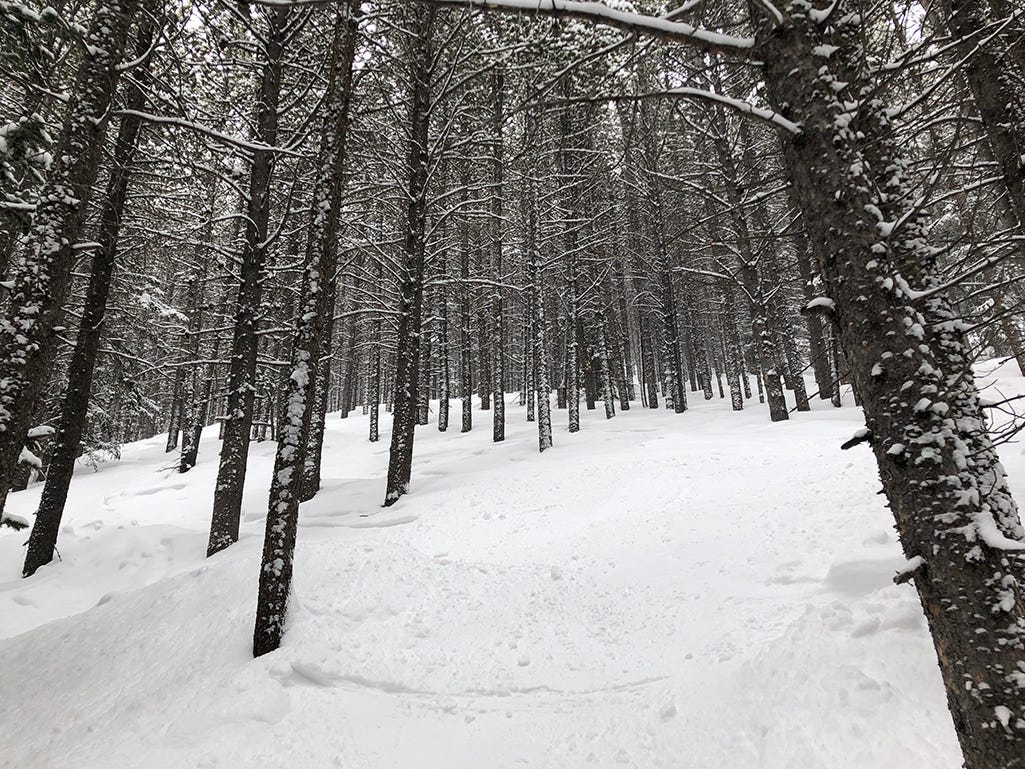
A pictorial history of Beaver Creek’s development
Beaver Creek opened with six chairlifts, all on the main mountain, in 1980. By the next season, a triple ran up Strawberry Park. McCoy Park is a named section of the ski area more than four decades before it would enter the downhill system:
The Larkspur triple came online in 1983. Two years later, McCoy Park is defined on the trailmap as a Nordic center:
In 1991, Grouse Mountain opened:
In 1997, Beaver Creek as we know it today came together, with lift connections from Rose Bowl all the way to Arrowhead, which was once an independent ski area. Beaver Creek purchased the small mountain in 1993 and eventually connected it to the rest of the resort via the Bachelor Gulch terrain expansion. Here’s what the mountain looked like in 1998:
The Storm publishes year-round, and guarantees 100 articles per year. This is article 31/100 in 2022. Want to send feedback? Reply to this email and I will answer. You can also email skiing@substack.com.







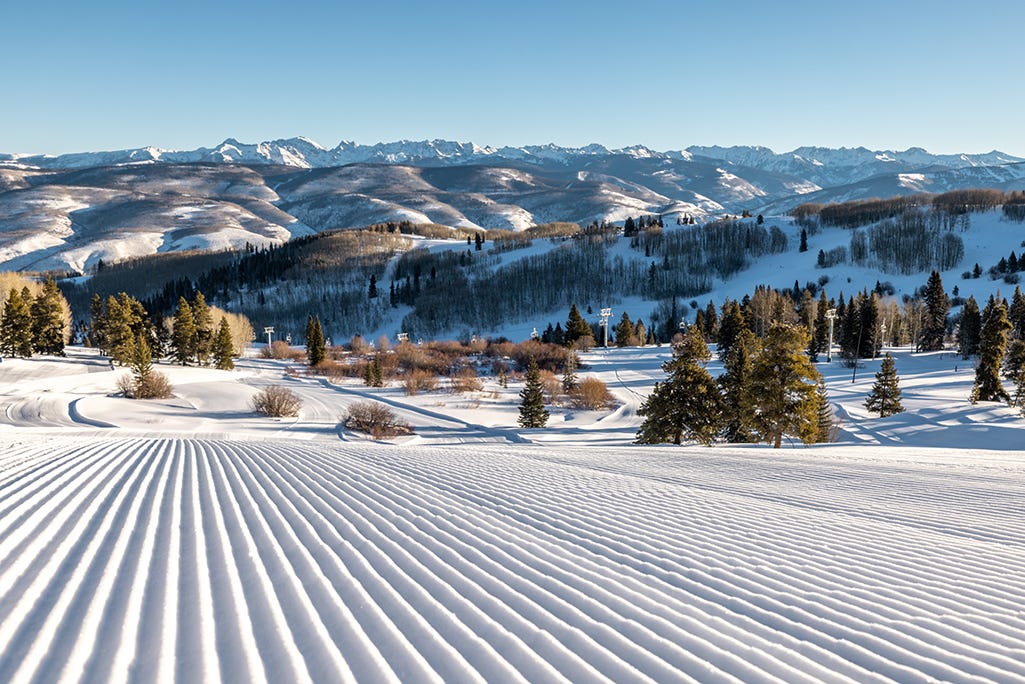

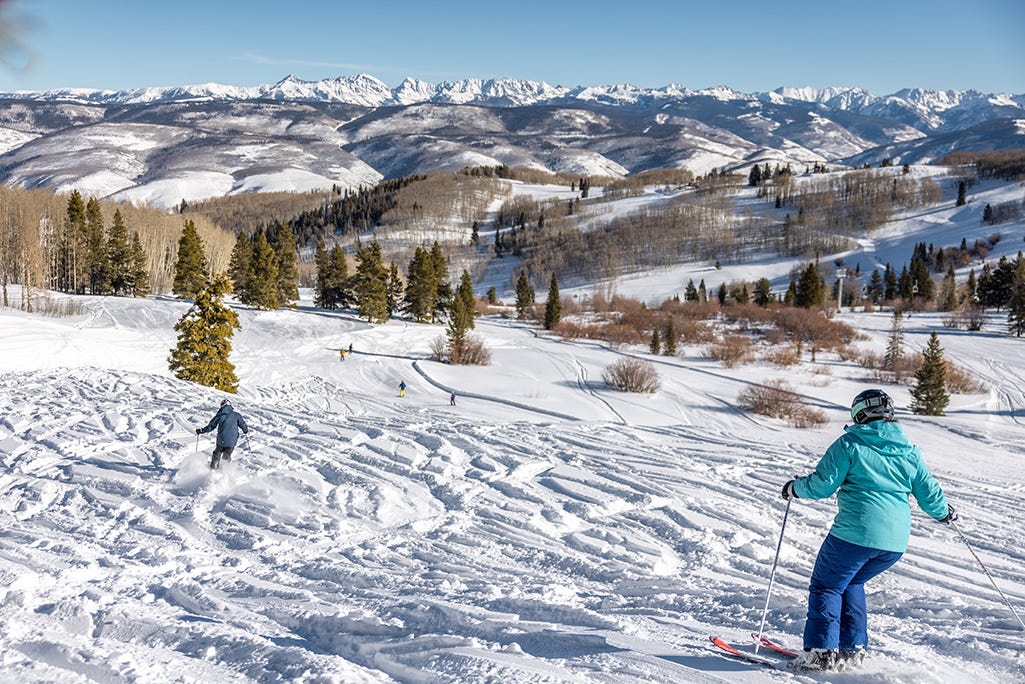
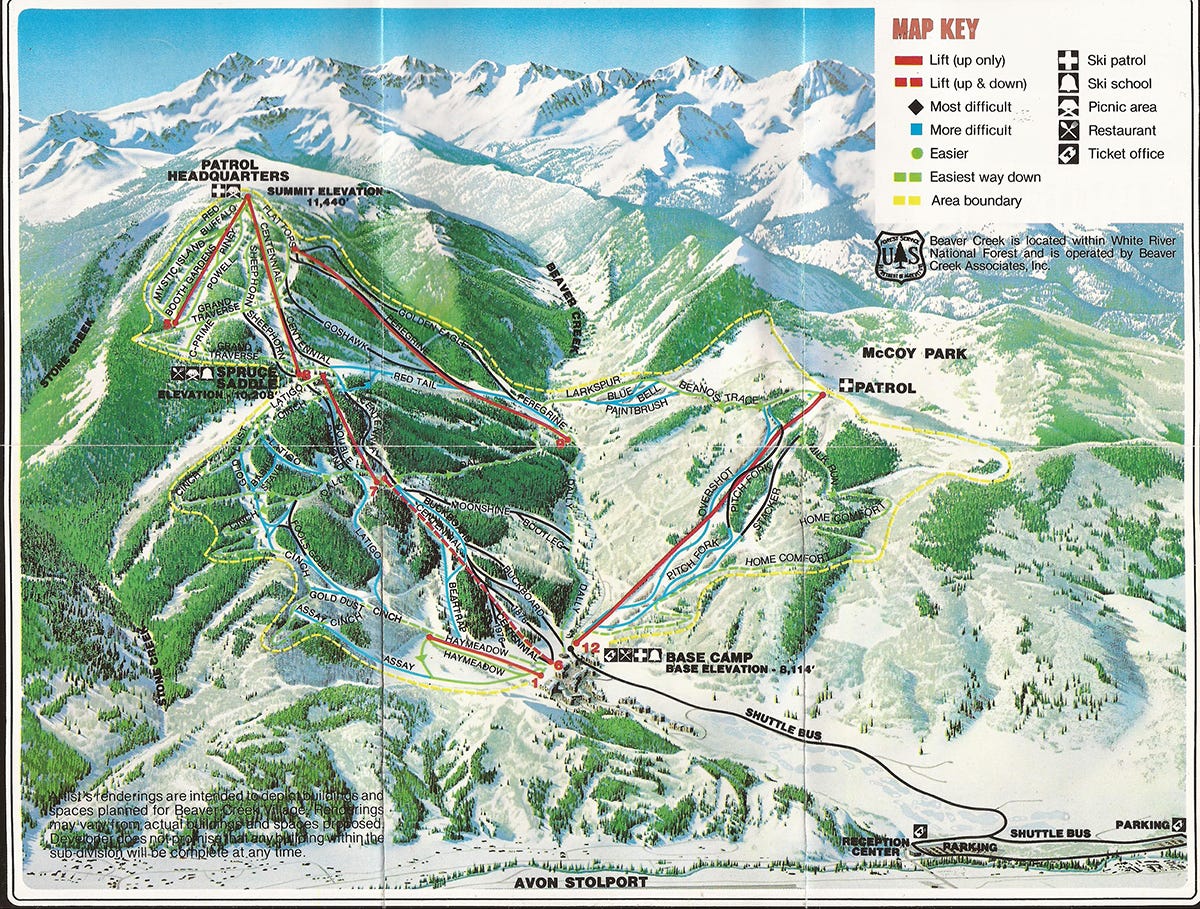
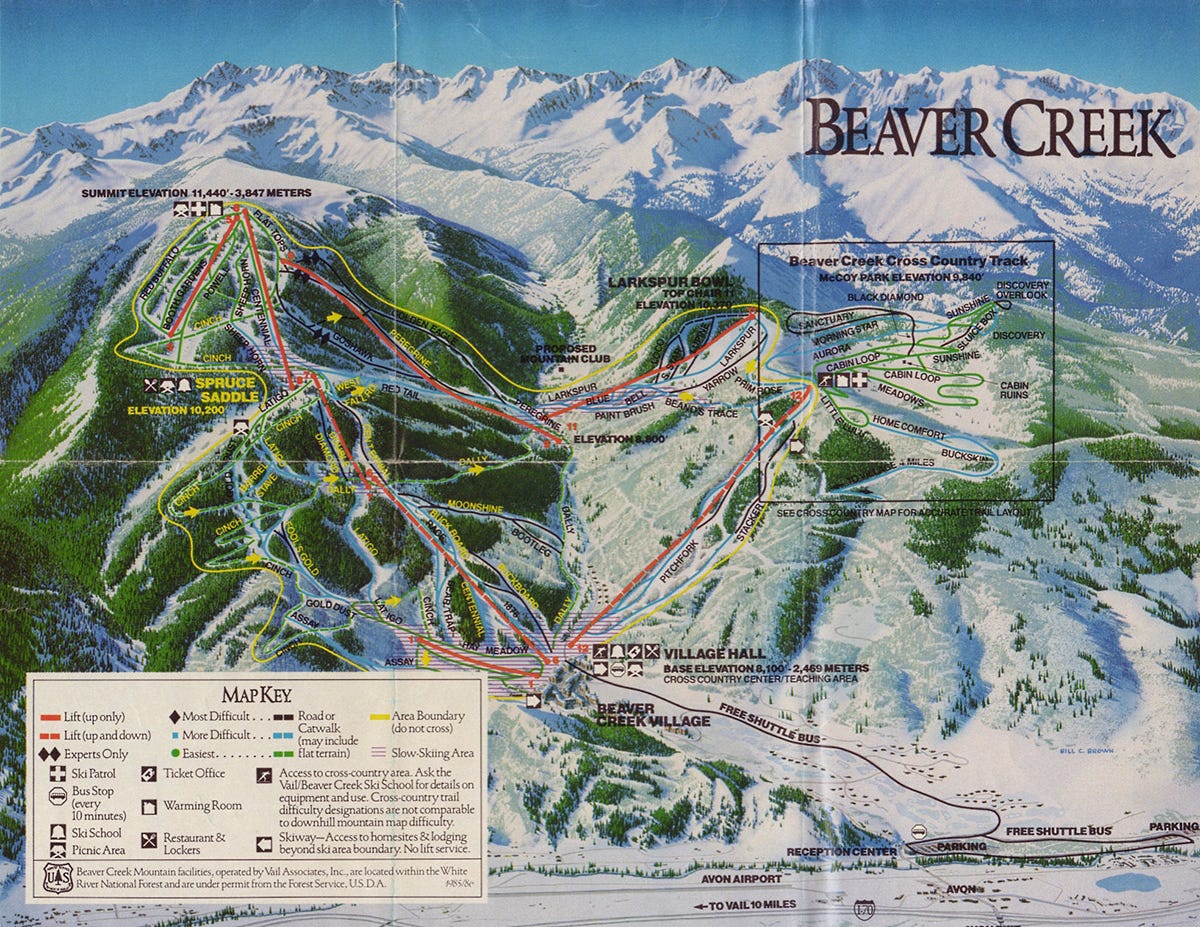









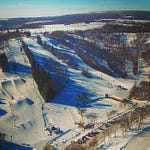


Podcast #79: Beaver Creek Vice President & Chief Operating Officer Nadia Guerriero